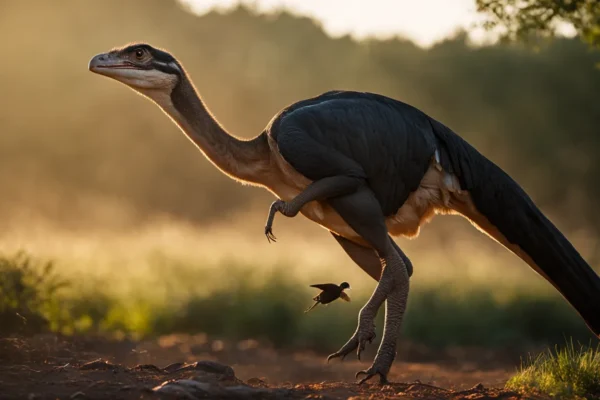The only vertebrate species that lays multicolored eggs are birds. Observing bird nests and eggs in birdwatching communities is delightful and interesting. As bird’s eggs come in various colors and sizes.
So that’s why…
Which bird lays blue eggs is a common question. Please continue reading to learn more about colored eggs if you are here with the same query.
Birds That Lay Blue Eggs
Anyone who sees blue eggs or any other colored eggs in a bird’s nest will be inquisitive about where they may have come from. What birds lay blue eggs. Does the presence of blue-speckled bird eggs have any basis in reality?
But it’s very natural if the first thing that pops into your head is that a bluebird laid these blue eggs. Many animals may lay colored eggs, and certain chicken breeds, such the Ameraucana chicken, Easter egger, and Araucana chicken, can even lay blue eggs.
Even the Olive egger breed produces brown eggs, while the Favaucana strain produces green eggs. It may be a pleasant surprise to come upon eggshell shards in your garden, in the woods, or when traveling. Observing anything other than the typical white egg may be intriguing.
The astounding variety of eggs draws people’s attention unlike anything else. Humans and avian life connect largely via the use of colors, forms, and visual or aural displays, sharing each other’s sensory worlds.
Let’s learn more about the birds that lay blue eggs
Red-winged Blackbirds:
 The red-winged blackbird (Agelaius phoeniceus) is a species of true blackbird in the family Icteridae. It is the most abundant and widespread true blackbird in North America, and is one of the most abundant birds in the continent overall. the bird breeds in marshes and wetlands across much of temperate and subtropical North America, from southwestern Alaska and northern Canada to as far south as Panama. It is a non-migratory resident in the southernmost parts of its range; northern birds generally migrate to the southern United States or northern Mexico in winter.
The red-winged blackbird (Agelaius phoeniceus) is a species of true blackbird in the family Icteridae. It is the most abundant and widespread true blackbird in North America, and is one of the most abundant birds in the continent overall. the bird breeds in marshes and wetlands across much of temperate and subtropical North America, from southwestern Alaska and northern Canada to as far south as Panama. It is a non-migratory resident in the southernmost parts of its range; northern birds generally migrate to the southern United States or northern Mexico in winter.
Dunnocks:

The dunnock is a little bird that inhabits hedgerows, gardens, parks, and forest margins. It eats seeds, worms, and small insects. Although males and females are lifelong partners, the female will mate with several men and lay up to five eggs at a time.
Despite not being a member of the sparrow family, the dunnock is often referred to as a Hedge Sparrow.
American Robin:

American robins lay their stunning blue eggs in nesting cups with grass stems in trees or shrubbery near homes, orchards, and open forests. With two to three broods, this North American thrush species produces at least four eggs. The color of the egg offers some protection from predators as the bird might otherwise seem visible to humans in its brown nest. Some claim that the bird’s color is more of a greenish-blue tint rather than a pure blue.
House Finches:

House finches have a brown tail, red beak. They have grey wing feathers, and their backs have a dullish brown color. As with their breasts and plumage, the flanks are often streaked. The underparts of adult females are streaked, while their upper bodies are brown.
The house finch has the most vegetarian diet of any bird in North America, consisting of 97% plant stuff.
Gray Catbirds:

Catbirds have a black crown and a blackish tail with a brown patch beneath, despite the fact that they seem to be entirely grey. They may be found across much of North America, but during the winter they move to Mexico and Central America.
Catbirds are capable of producing over a hundred distinct sounds and may sing for up to 10 minutes at a time.
Black Tinamous:

Large and very uncommon black tinamous may be found in the cloud forest on the eastern side of the Andes. Compared to the grey tinamou, it is darker and plainer in color. They are difficult to spot in the field due to their dullish brown underparts. Like other woodland tinamous, your chances of seeing one are higher than hearing one. The sounds which they produce include low, modulated whistles as well as a low, prolonged coo that sounds like a dove but is longer.
Common Mynas

A member of the starling family, the common myna is often referred to as the Indian myna or Indian mynah. It is dark, with yellow-colored legs and a blackhead. When flying, there are noticeable large white wing patches.
Linnets:

The linnets are a species of small passerine bird in the finch family. They are sometimes also called “lingotes” or “lineoles”. There are two types of linnets: the common linnet and the red-billed linnet. The red-billed variety is more rare and is found in Africa.
Linnets are found in most of Europe, Asia, and North America. They are a migratory bird and can often be seen in flocks during the winter months.
Linnets are small birds with thin, pointy beaks. They are mostly brown and white, with a splash of color on their wings.
Blue Jays:

Blue Jays are naturally found in forests and are incredibly bright and adaptable birds. These widespread and often loud species are known by majority of bird feeders in North America. The blue jay can perfectly imitate a variety of hawk noises.
Song Thrushes:

The song thrush, also known by its scientific name Turdus philomelos, breeds all throughout the Palearctic. It has three subspecies with distinguishing features including brown upperparts and buff or black-spotted underparts. A unique song, also referred to as poetry, is created from repeated musical themes.
Eastern Bluebirds:

Eastern bluebirds are quite prevalent in the summer and are often seen in rural areas perched on telephone poles or wires. The head and back of a male Eastern Bluebird are a stunning royal blue, while their breast is a reddish-brown color.
The color of females is greyer, although they have exquisite blue tinges in their wings and tail.
Snowy Egrets:

Snowy Egrets are medium-sized, white herons with black bills and golden lores. Adults have black legs and yellow feet. Legs and feet are greenish-yellow on young birds.
In contrast to the Great Egret, which travels very slowly, Snowy Egrets forage in the wetlands in a reasonably fast manner. The snowy egret has a broader beak than the cattle egret and is more likely to wander with his feet in the water than in open fields.
What other colors does a bird’s egg has?
As one would anticipate, bird eggs often have neutral hues. Since calcium carbonate makes up the majority of eggshells, white is their natural color. Different shades of white are possible, ranging from a more honeyed cream tint to a more harsh finish.
Even the commercial paint marketed as “eggshell white” may have caught your eye. But an eggshell comes in many colors than just white. In actuality, eggshells may be found in a wide range of stunning colors. Despite the variety of colors, just two pigments are responsible for the look.
Together with the underlying calcium carbonate, one is green and the other is reddish-brown, and they may produce a variety of lovely colors, from a deep, dark blue to a rich, dark brown, to an emerald greenish-white. The underappreciated works of art in the natural world are the colors of eggshells.
What function do the colors of an eggshell serve?
In addition to providing nourishment for many animals, including other birds, eggs also serve as incubators for growing embryos. Eggs must thus have an additional protection. This is when their camouflage color comes into play.
Many animals, including snakes, amphibians, and even other birds, depend on bird eggs as a food source. Birds take full use of the fact that camouflage is crucial while attempting to safeguard one’s fragile brood.
Neutral-colored eggs may even be deposited on the ground and in open areas since they blend in with the surroundings readily because their colors are comparable to those of the nest material (known as scrape nests.)
Birds will also adorn their nests with organic components like branches or seashells to provide an additional layer of protection.
How Are the Eggs Shielded from the Sun by the Colors?
A bird egg may suffer severe damage from sunlight, yet the color can and often does provide protection. The sun’s heat and radiation may harm eggs and have an impact on both the length of incubation and the growth of the young, unborn chick.
There are more deaths and mutations when the sun’s heat shortens the incubation time and speeds up the growth of the chicks. A dark-colored egg will be less affected by UV radiation (ultraviolet), whereas a light neutral-colored egg may be more susceptible to overheating.
A lighter colored egg may reflect part of the heat from the sun and remain cooler, but a darker colored egg will be substantially affected by the heat from direct sunshine.
The color of a bird’s eggs is greatly influenced by its geographic range. Lighter-colored eggs are often laid by birds in open, exposed environments that get more sunshine. Darker colored eggs are laid by birds who inhabit hidden locations with little sunshine exposure.
Over many generations, they have developed to strike the ideal balance between the safest color and the ideal atmosphere in which to lay their eggs. Because of differences in their habitat choices and demography, birds of the same species may have somewhat varied colored eggs.
What does egg color tells us about the health
Bright and colorful eggs are a terrific sign that both parents and chicks are healthy; they also suggest that the mother bird is eating a rich diet and that the hatchlings will develop into strong, healthy adults.
Habits of Nest Care
In general, you’ll find that eggs laid by parents that often leave their nests unattended or to go foraging will be well disguised. Parents who seldom leave their nests will produce eggs that are basic in color and have little to no camouflage.
Why are Robin’s eggs blue?
A pigment called biliverdin is applied to the eggshells by the female Robin during egg-laying, which is why robins’ eggs appear blue. According to data, healthier females and brighter-colored eggs are produced when biliverdin levels are greater.
Healthy females tend to lay eggs that stimulate males to be more interested and present with their kids. The biliverdin pigment gives Robin’s eggs a lovely blue gloss and gives them their distinctive blue color.
Try to be calm and quiet the next time you are going around the yard and you encounter a robin. Then, check if you can locate Robin’s blue eggs.
Final Thoughts
It might be unexpected to see blue eggs at first. But as you’ve undoubtedly guessed, several bird species produce blue eggs. For their offspring, it is a natural color. We hope you enjoyed reading this article about the types of birds that lay blue eggs.
Please let us know in the comments section if you discover blue eggs.






3 thoughts on “What Birds Lay Blue Eggs? [Complete guide of egg colors]”